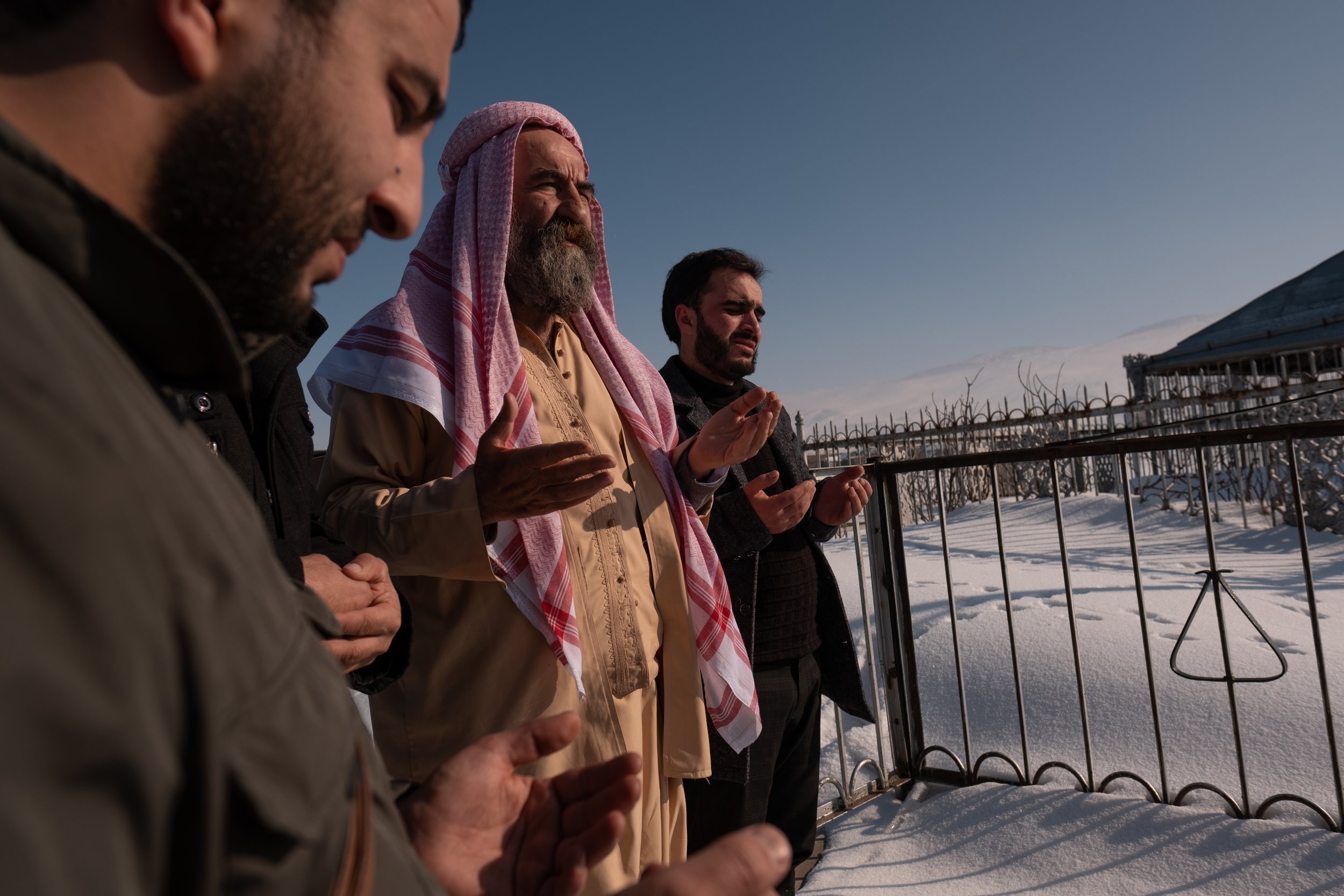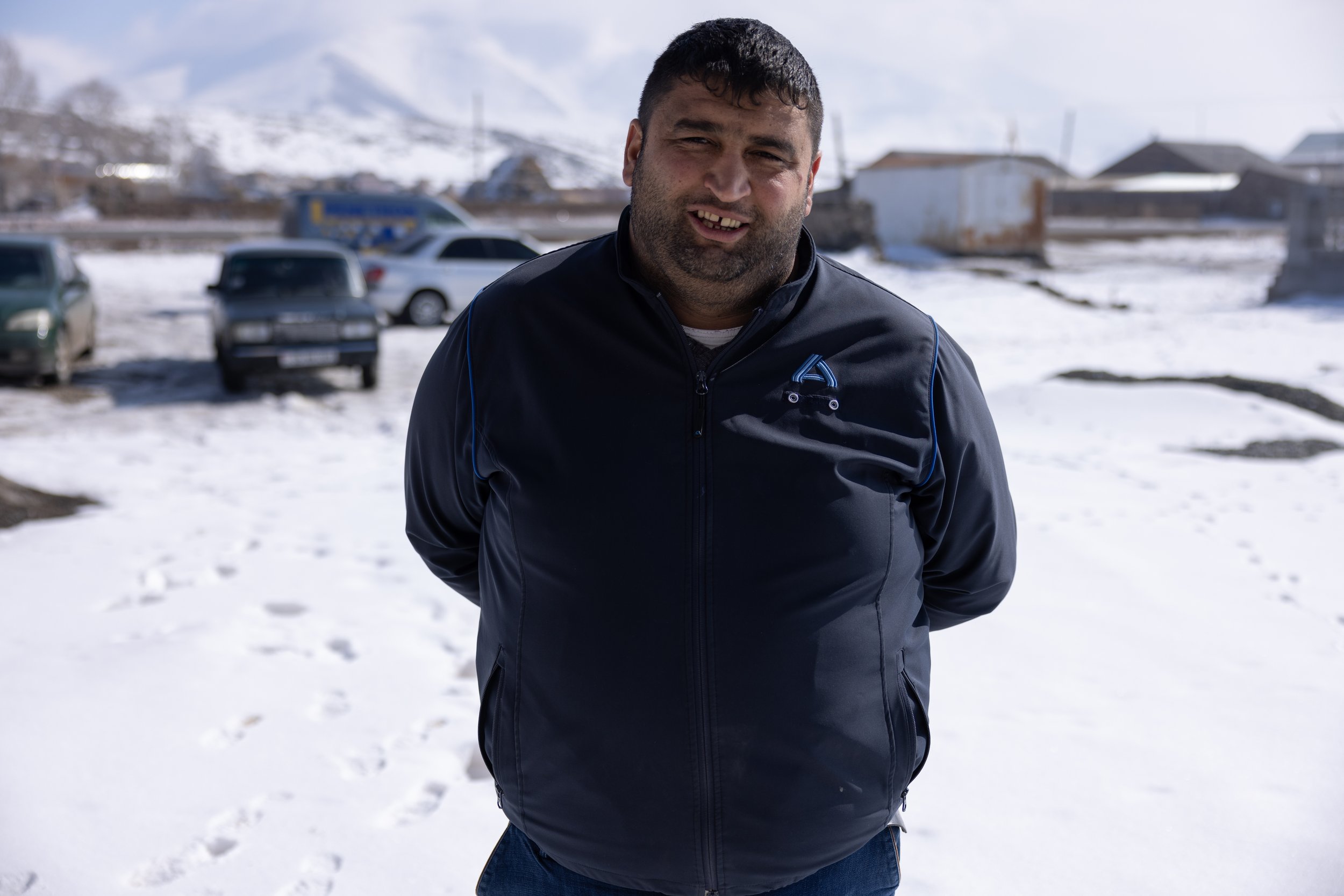// Guardians of Faith //
The Yazidis of Armenia
In the peaceful villages of Rya Taza and Alagyaz, nestled in Armenia’s Aragatsotn Province just an hour northwest of Yerevan, the Yazidi community has found a haven. These villages, with their rich history and tranquil surroundings, are home to a people who have survived centuries of adversity. Much like their Armenian neighbors, the Yazidis have endured persecution, forced migration, and hardship, often fleeing their homelands due to religious intolerance and violence.
From 2014 to 2017, as the brutal forces of ISIL ravaged their homeland in Iraq, thousands of Yazidis fled to Armenia and neighboring Georgia, seeking refuge from the terrifying violence. In the heart of Rya Taza, a small Yazidi temple stands as a quiet testament to their enduring faith. Yet, south of Yerevan, in Aknalitch of Armavir Province, the world’s largest Yazidi temple, the Quba Mere Diwane Temple, was completed in 2019. This grand structure symbolizes the resilience and unwavering devotion of the Yazidi people.
The Yazidis, who call themselves “Êzîdî” or “Dasinî,” trace their faith to ancient roots, with strong connections to other groups like the Yaresan and Kurdish Alevis. Scholars believe these religions grew out of an ancient faith among the western Iranian peoples. The word “Yazidi” is thought to come from the Old Iranian term “Yazata,” meaning “divine being,” reflecting their reverence for a higher power. Their faith centers around one God and the care of seven sacred beings, known as the “heft sirr” or Seven Mysteries, angelic protectors guiding their lives.
The Yazidis live by a unique set of traditions that reflect their spiritual beliefs. They avoid certain foods, such as pork and cabbage, and they hold blue to be a taboo color. In March, families bake large gata, a sweet pastry, with a coin hidden inside. The person who finds the coin is believed to receive good fortune. When entering a Yazidi temple, visitors must remove their shoes and step over the entrance, a practice shared with Muslims. And when leaving, they exit with their right foot first, a small yet significant gesture of reverence.
In Armenia, the Yazidi community is one of the largest ethnic minorities, with over 35,000 members. Many of them are descendants of those who fled the Ottoman Empire’s persecution during the Armenian Genocide. For centuries, the Yazidis have faced violence from the early Muslim conquests to the policies of Saddam Hussein’s regime. Forced conversions to Islam have been a repeated threat, but the Yazidis have always held fast to their identity and their faith.
The Yazidi religion, rooted in pre-Zoroastrian Iranic traditions, has endured for over 7,000 years. It continues to thrive today, not only in Iraq, Turkey, Syria, Armenia, and Georgia but also in diaspora communities across Europe, North America, and Australia. Many Yazidis, especially in Iraq, served as translators for the U.S. military during conflicts in the Middle East, helping bridge cultural gaps in the midst of war.
The situation in Iraq, however, has been particularly dire. The Yazidis’ homeland in northern Iraq, particularly in the Nineveh Governorate, has been a site of repeated violence. In 2014, ISIL launched a brutal attack on the Yazidi people, targeting them for their faith. Thousands were killed, and thousands more mostly women and girls were abducted, sold into slavery, or murdered for refusing to convert. Those who managed to escape sought refuge in the Kurdish controlled areas in northern Iraq.
During this time, the Peshmerga, the Kurdish military forces, played a pivotal role in defending the Yazidi people. When ISIL captured Sinjar in 2014, the Yazidi community found itself trapped, with thousands seeking refuge on Mount Sinjar, facing the threat of slaughter or death by dehydration. The Kurdish Peshmerga forces, along with Yazidi fighters, mounted a resistance, pushing back against the jihadists and eventually helping to rescue thousands of Yazidis.
Many Yazidis fought alongside the Peshmerga during these dark days, with Yazidi men and women joining the Kurdish forces to reclaim their land. These fighters, often armed with little more than their determination, became symbols of resistance. The battle against ISIL became not just a struggle for survival but a fight for the preservation of Yazidi identity, and for many, it echoed the parallels with their earlier struggles.
In addition to their involvement in Iraq, the Yazidis in Armenia have forged strong bonds with the Armenian people. Many Yazidi soldiers fought alongside Armenians in the First Nagorno-Karabakh War in the 1990s and in the 44-Day War of 2020. For these soldiers, the experience of fighting against Azerbaijan’s forces was not unlike their struggles against ISIL. Both were battles for survival, for defending their homes, their families, and their faith.
On February 17 and 18, Yazidis around the world gather to commemorate Khidir Elias Eid, an ancient holiday celebrated for over 4,000 years. This festival is a time of joy and hope, especially for young people. Unmarried men and women prepare Qorsik, a special salty bread, and eat three pieces before going to bed. It is believed that if they dream of a young person offering them water, they will meet and marry that person in real life, an old tradition similar to the Armenian Saint Sarkis holiday.
From the ancient temples of Rya Taza to the grand Quba Mere Diwane Temple in Aknalitch, the Yazidi people continue to endure, united in their faith, memory, and an unbreakable resolve to protect their heritage. Their strength is a testament not only to their ability to survive but to their deep desire to pass on their traditions to future generations. And as the Yazidis continue to remember their fallen soldiers and honor their history, they stand tall, resilient, steadfast, and hopeful for the future.
Spiritual leaders from Iraq pay their respects to fallen Yazidi soldiers who fought in the Armenian Army on February 17, 2022.
One of two spiritual leaders from Şingal/Sinjar, Iraq who visited Armenia in February, 2022 for the Khidir Elias Eid holiday, which dates back to about 4,000 B.C.
Zohrab manages the Facebook page for the Yazidi community in Armenia. He lost a close friend to sniper fire from Azerbaijani soldiers in Vardenis, Armenia. This is a tragic result of the ongoing conflict along Armenia’s border regions.
Alik, a member of the Yazidi community who fought with the Armenian Army in the 44 Day War. His story will be part of a short interview series in the future.
Zeytun, a local resident of Rya Taza, Armenia. Her family immigrated from Kars to escape persecution by the Ottomans during the Armenian Genocide.
















